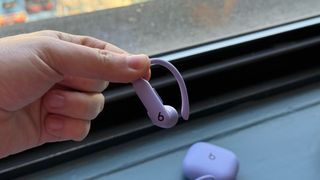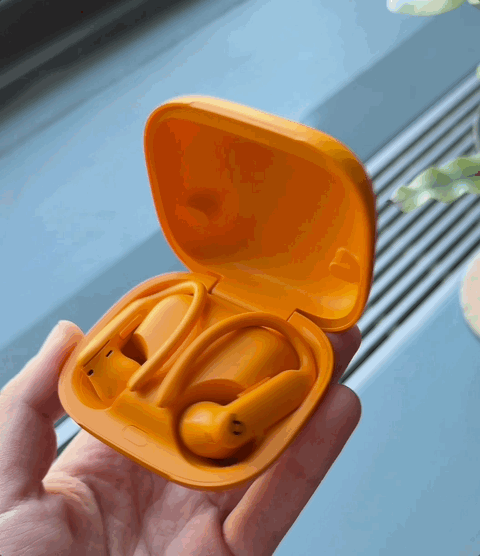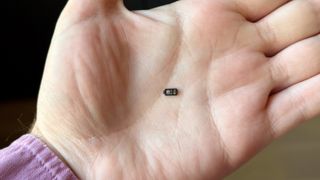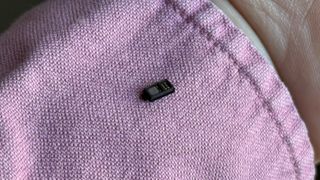- Beats has finally made Powerbeats Pro 2 official
- The earbuds are the first from Beats to feature heart rate sensors
- Active noise cancellation, longer battery, and wireless charging
It’s been a long time coming, but Beats has officially announced the Powerbeats Pro 2 after countless teasers shared and many rumors. It’s been six years since the original Powerbeats hit the scene, and the successors aim to leapfrog them in many ways.
The iconic ear hooks remain, though the design is a bit more modern and slimmer overall. Most important, though, are the upgrades made under the hood. For example, the buds adopt the AirPods Pro 2’s H2 chip and they usher in some new tech, including a custom dual-layer driver and a heart-rate sensor, a first for any Beats product or Apple-made earbuds.
Beats has been working towards this feature set for Powerbeats Pro 2 for quite a while. “When we were ideating on Powerbeats wireless during the acquisition process, this is the list of features we wanted,” explained Matthew Costello, Apple’s VP of Hardware Engineering. It took Beats’ own development of features paired with Apple’s technologies to get it across the finish line.
So, let’s unpack Powerbeats Pro 2 a bit more. If you’re part of the Beats faithful who’s been waiting for its next entry in ear-hook earbuds, know that the price has not increased from the original. Powerbeats Pro 2 is $249.99 in the United States, $249.99 in the UK, and $399.95 in Australia. At launch, the earbuds come in four colors: Jet Black, Quick Sand, Hyper Purple, and Electric Orange.
What’s new with Powerbeats Pro 2
The entire Powerbeats Pro 2 package is slightly slimmed down, but the ear hooks ensure these won’t fall out. The earhooks, main body, and the bridge connecting the two are all thinner, and that bridge is more of a sharply angled bar. All this makes them still very comfortable on your ears, but folks who hate capacitive buttons on earbuds will be pleased that the Beats logo is still physical and that a volume rocker is located on the bridge.
Inside each Powerbeats Pro 2 is Apple’s H2 chip, powering connectivity and on-device processing, and it’s the first of the best Beats headphones in a while to get a processor from its parent company, that than using Beats’ chips. It also puts them on a level with AirPods Pro 2, and these are the first Powerbeats Pro with active noise cancellation, a Transparency mode, and Adaptive EQ for mixing the playback in real-time.
Powering the audio is a new Beats-made and -designed 9.5mm driver, set in a dual-layer design and larger than is used in other earbuds in its current lineup. Additionally, it’s been tuned to exceed the original’s frequency range but still be true to Beats – meaning, you can expect an ample lower-end. It’s also paired with redesigned venting on the earbuds – there’s less visibility on these – and a new acoustic mesh.

The feature that’s helped make my commute to the office a bit better while I’ve been testing them is support for Spatial Audio with headtracking. This shines with Apple Music – I’m a big fan of having friends first try it with Down on The Corner by Creedence Clearwater Revival – as it makes for a much more compelling, immersive audio experience, and also with movies and TV shows mixed in Dolby Atmos.
Further, if you have an Apple Vision Pro, Powerbeats Pro 2 is the second audio product to support ultra-low latency with the $3,500 (starting) spatial computer. Apple’s AirPods Pro 2 was the first.

A first for Beats and for Apple: Heart-Rate Sensors on the earbuds

What’s really new, though, is that Powerbeats Pro 2 is the first earbuds from Beats – and from Apple – to ship with a heart-rate sensor for each ear. I’m told it was made possible thanks to deep collaboration between the two sides of the company, but it’s clear the biometric feature will be especially appealing to one segment of the Powerbeats market: athletes. That’s why Beats tested these with over 1,000 athletes.
The heart-rate sensor for Powerbeats Pro took a while to come to life and was something Beats wanted for the original version. It’s derived from the Apple Watch, but is actually 1/16th the size of the sensor in the Apple Watch Series 10. It’s really tiny, as you can tell from it in the palm of my hand. The sensor contains an LED sensor, a photodiode, an optical lens, and an accelerometer. When you have both Powerbeats in your ears, it will take a reading.
I asked Costello how hard it was to deliver a heart-rate sensor in an earbud and ensure its accuracy. “We did leverage a lot of the work from the Watch, but we developed our own algorithms as well based on the placement in the ear. It was a big challenge, but we got there,” he told me. The result is that each ear takes a reading in use, and the algorithms look at both and deliver a result that will populate as a reading every five seconds.

The heart rate sensor isn’t accessible everywhere, though, at launch in the United States, it works with these iOS apps: Peloton, Slopes, Ladder, Open, Runna, YaoYao, and Nike Run Club.
The heart-rate readings will also appear in the Health app on your iPhone, but if you’re wearing an Apple Watch, those readings will take priority, and there is no way to disable this. You might also notice that Apple Fitness Plus isn’t here at launch. We didn’t get an exact answer as to why, but Beats did note that it’s looking to expand support. Conversely, the Powerbeats Pro 2 heart rate readings on Android will work with any major fitness or workout app.
It’s notable that Apple and Beats chose to debut the heart-rate sensor on Powerbeats Pro 2 first, despite rumors that it’s also coming to AirPods Pro 3 – and the team is clearly excited about it. It also feels very much like a Beats move since so many athletes opt to use Beats products.
Costello says, “We’re extremely excited to bring this first health-centric tech to the Powerbeats Pro line, and we think it’s a real lane for future development.”
Alongside heart-rate tracking, Beats is finally delivering on two things that weren’t necessarily perfect from the original Powerbeats Pro. For the second generation, the case is finally supporting wireless charging, and it’s 33% smaller, something that Costello described as a “labor of love.” It still bulges in the pocket, but it fits much better and is more of a rounded rectangle than a proper square. Each earbud magnetically attaches inside at the appropriate spot and will recharge here.
And while the earbuds do get Find My integration on the iPhone and Find My Beats on Android via the companion app, the case does not feature the U1 chip like AirPods Pro 2 or a speaker on the case like AirPods 4 with Active Noise Cancellation.
Regarding battery life, Beats promises up to 45 hours of playback without a listening mode enabled, including recharges from the case. This means you get 10 hours from the buds on a full charge, and three-and-a-half recharges in the case. With ANC or Transparency on, you get up to 36 hours of listening, and eight hours from the buds alone. That’s a sizeable improvement over the original. They also include IPX4 sweat and water resistance, which is a little less robust than I might have expected for sports headphones.
I’ve been testing them for about two weeks, and as a die-hard fan of the original Powerbeats Pro, I feel pretty at home here. The sound quality is better, and ANC and Transparency do the trick quite well for commuting into the office and trying to block out the world around me. I like that Beats sticks to its roots with a punchy lower-end, but as someone who swapped Powerbeats Pro for Beats Fit Pro and AirPods Pro (1 and 2), I did find myself taking a few days to get used to the ear-hook design again.
I think many folks looking for the best workout headphones will be happy with these, especially the ear hook for those who don’t like the pinchy feeling of wingtips. We’ll be back soon with a full review and a deeper dive into the fitness features.
You might also like
Services Marketplace – Listings, Bookings & Reviews
